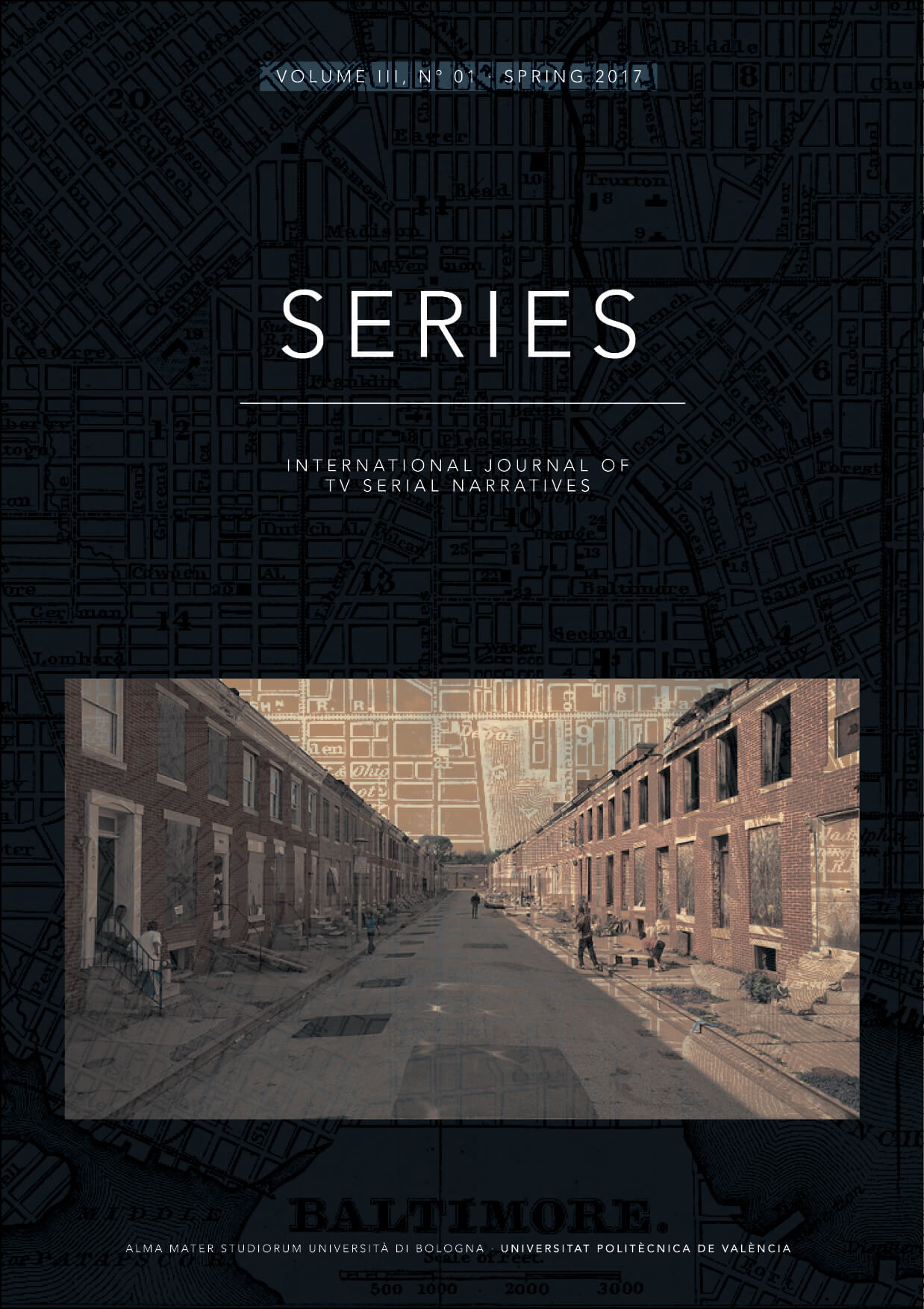The Gold Coast on Screen: Children’s television selling Brand Australia in international markets
DOI:
https://doi.org/10.6092/issn.2421-454X/7140Keywords:
children’s television, landscape, screen production, screen policy, live action drama, beach locationAbstract
For many countries, children’s television plays a vital role in national cultural representation. Australia with a population of 22m people has had state supports including local content quotas for children’s television since the late 1970s. Despite its important role in national cultural representation Australian children’s television—particularly high cost, scripted drama—has always been viewed internationally. Indeed, ever since iconic drama Skippy (1967), Australian children’s television has relied on international investment and sales to cover its costs. Thus producers have become adept at using Australian landscapes to create a distinctive and appealing ‘Brand Australia’ for international audiences. This paper examines the ways in which Australian beach locations offer both an aesthetic and an economic advantage to producers. It analyses the interactions between location, infrastructure, policy settings, and the international appetite for Australian children’s television in local production ecologies. It shows too that despite the international success of Australian children’s television with a distinctive aesthetic, live action drama as a genre faces significant funding pressures in digital regimes.References
Australian Children’s Television Foundation (n.d.). “Mortified Press Kit.” http://www.mortified.edu.au/downloads/PressKit.pdf (last accessed 22-09-16).
Australian Communications and Media Authority (2016). “Children’s Television Standards.” http://www.acma.gov.au/Citizen/TV-Radio/Television/Kids-and-TV/childrens-television-standards-kids-tv-and-advertising-i-acma (last accessed 22-09-16).
Beeton, Sue (2010). “Landscapes as Characters: Film, Tourism and a Sense of Place.” Metro: Media & Education Magazine 152: 114–8. http://search.informit.com.au.ezproxy.library.uq.edu.au/documentSummary;dn=410690301116007;res=IELAPA>. (last accessed 13-03-17)
Bertrand, Ina and Diane Collins(1981). Government and Film in Australia. Sydney: Currency Press.
Bonner, Frances, Susan McKay and Alan McKee (2001). “On the Beach.” Continuum 15(3): 269-74. DOI: http://dx.doi.org/10.1080/10304310120086768.
Cordaiy, Hunter (2007). “H2O: Just Add Water: A fairytale in a real world.” Metro: Media and Education Magazine 152: 146-153.
Cunningham, Stuart and Elizabetz Jacka (1996). Australian Television and International Mediascapes. Melbourne: Cambridge University Press.
du Fresne, Kylie. Interview with Anna Potter, Sydney, Australia. 2 May, 2013.
Edgar, Patricia (2006). Bloodbath: A memoir of Australian television. Victoria: Melbourne University Press.
Ellison, Elizabeth (2013). The Australian Beachspace: Flagging the spaces of Australian beach texts. PhD Thesis. Brisbane: Queensland University of Technology.
Fiske, John, Bob Hodge and Graeme Turner (1987). Myths of Oz: Reading Australian Popular Culture. Sydney: Allen & Unwin.
Ford, Clementine (2015). “Does Neighbours Really Represent Australia?” BBC: Culture. http://www.bbc.com/culture/story/20150317-australia-is-nothing-like-this (last accessed 02-09-16).
Gammack, John and Stephanie Donald (2006). “Collaborative Methods in Researching City Branding: Studies from Hong Kong, Shanghai, and Sydney.” Tourism, Culture and Communication 6(3): 171-80. DOI: http://dx.doi.org/10.3727/109830406778134144.
Gibson, Mark (2014). “Tchk, Tchk, Tchk: Skippy the bush kangaroo and the question of Australian seriousness.” Continuum 28(5): 574–82. DOI: http://dx.doi.org/10.1080/10304312.2014.941970.
Goldsmith, Ben and Tom O’Regan (2005). The Film Studio: Film Production in the Global Economy. Lanham, USA: Rowan & Littlefield Publishers, Inc.
Hudson, Simon and Brent Richie, JR (2006). “Promoting Destinations via Film Tourism: An Empirical Identification of Supporting Marketing Initiatives.” Journal of Travel Research Vol. 44, May 2006, 387–96. DOI: 10.1177/0047287506286720.
Knox, David (2012). “Jay Laga’aia Criticises Home & Away’s Lack of Diversity.” TV Tonight. http://www.tvtonight.com.au/2012/02/jay-lagaaia-criticises-home-aways-lack-of-diversity.html (last accessed 23-08-16).
Moran, Albert (2006). “The International Face of Australian Television.” Media International Australia, Incorporating Culture & Policy 121: 174–87.
Olsen, SR (2004). “Hollywood planet: global media and the competitive advantage of narrative transparency.” In Television Studies Reader, edited by R.C. Allen & A. Hill, 111–29. London & New York: Routledge.
Oxford Economics (2012). “The Economic Impact of the UK Film Industry.” http://www.bfi.org.uk/sites/bfi.org.uk/files/downloads/bfi-economic-impact-of-the-uk-film-industry-2012-09-17.pdf (last accessed 15–03–17).
O’Mahony, Bernadette. Interview with Rachel Davis, 23 August, 2016, Melbourne, Australia.
Potter, Anna (2015). Creativity, Culture and Commerce: Producing Australian Children’s Television With Public Value. Bristol: Intellect.
Price, Emma (2010). “Reinforcing the Myth: Constructing Australian identity in ‘reality TV’.” Continuum 24(3): 451–9. DOI: http://dx.doi.org/10.1080/10304311003703157.
Screen Australia, (2011). “Australian Screen Stories Are Important To Australians.” Sydney: Screen Australia, http://www.screenaustralia.gov.au/getmedia/c1d643d6-ee81-4b3b-a194-9faefa5325f4/Australian-Screen-Stories-Research.pdf?ext=.pdf (last accessed 23–3–17).
Shiff, Jonathan- Interview with Anna Potter, September 3, 2008, Melbourne Australia.
Steemers, Jeanette (2010). Creating Preschool Television: A Story of Commerce, Creativity and Curriculum. Basingstoke: Palgrave.
Waddell, Terrie (2003). “The not so secret life of us at home and away: Cashing in on beach culture.” In Some Like it Hot: The beach as a cultural dimension, edited by A. Edwards, K. Gilbert and J. Skinner, 40–57. Oxford: Meyer & Meyer Sport.
Ward, Susan and O’Regan, Tom (2011). “Defining a National Brand: Australian television drama and the global television market.” Journal of Australian Studies 35(1): 33–47. DOI: http://dx.doi.org/10.1080/14443058.2010.541928.
Ward, Susan and Anna Potter (2009). “H2O: Just Add Branding: Producing High Quality Children's TV Drama for Multi-channel Environments.” Media International Australia 133: 31–42.
TV Series and Films cited
Bondi Rescue (2006–)
Dance Academy (2010–2013)
Flipper (1964–1967)
H20: Just Add Water (2006–2010)
Home and Away (1988–)
Lassie (1954–1974)
Lightning Point (2012–)
Lockie Leonard (2007–2010)
Mortified (2006–2007)
Neighbors (1985–)
Nim’s Island (2008)
Ocean Girl (1994–1997)
Puberty Blues (2012-2014)
Skippy the Bush Kangaroo (1967–1970)
The Elephant Princess (2008–)
Voyage of the Dawn Treader (2010)
Downloads
Published
How to Cite
Issue
Section
License
Copyright (c) 2017 Anna Potter, Rachel Davis
Copyrights and publishing rights of all the texts on this journal belong to the respective authors without restrictions.
This journal is licensed under a Creative Commons Attribution 4.0 International License (full legal code).
See also our Open Access Policy.





